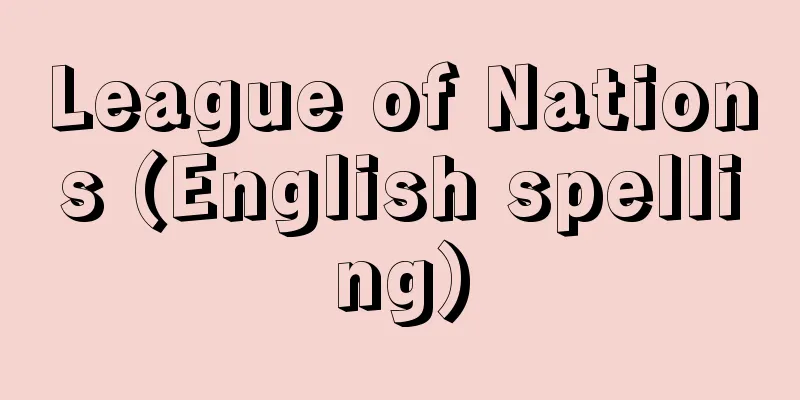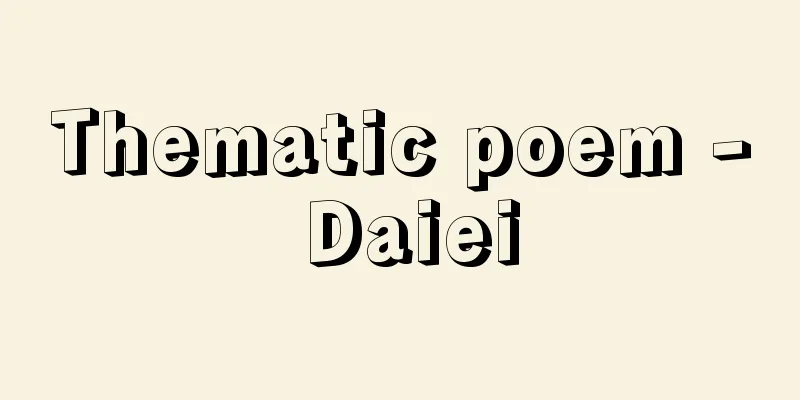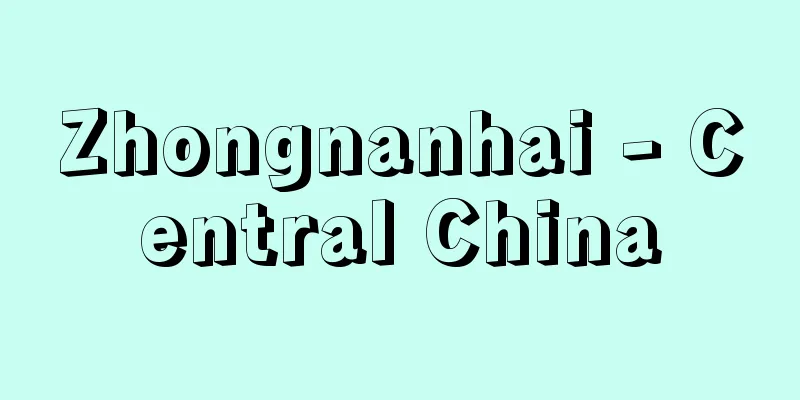League of Nations (English spelling)

|
The first international peace organization in history, founded after World War I. It was inaugurated on January 10, 1920, with its headquarters in Geneva, Switzerland. Its founding document, the Covenant of the League of Nations, consists of 26 articles and was incorporated into peace treaties with the Central Alliance, such as the Treaty of Versailles and the Treaty of Saint-Germain. The League was founded at the initiative of U.S. President Wilson, with the primary objective of maintaining international peace, based on reflection on the unprecedented devastation of World War I. International cooperation in the economic, social, and cultural fields had already been organized since the 19th century, but the League also took on this role. The annex to the Covenant listed 45 original member countries, including the peace treaty signatories (32) and invited countries (13), but in reality 42 countries participated, and other countries were allowed to join by a two-thirds majority vote of the General Assembly. However, the non-participation of the United States placed restrictions on its activities. [Takako Ueda] InstitutionsThe main executive organs were the General Assembly and the Council, assisted by a permanent secretariat in Geneva. The General Assembly was composed of all the member states of the League, and regular sessions were usually held every September. The Assembly's jurisdiction extended to all matters affecting the League's entire sphere of action or world peace. The Council was composed of permanent and non-permanent members. At the time of its establishment, the Council consisted of four members: Great Britain, France, Italy, and Japan. The number of permanent members changed with the accession of Germany and the Soviet Union, the withdrawal of Japan, Germany, and Italy, and the expulsion of the Soviet Union. The number of non-permanent members increased from four to six (1922), and then to nine (1926). The powers of the Council were similar to those of the General Assembly, but because it acted quickly, it was used frequently, and it had special powers on disarmament, mandates, protection of minorities, and the Saar and Danzig problems. In principle, voting was unanimous in both the General Assembly and the Council, but in practice this rule was relaxed. The Permanent Court of International Justice and the International Labour Organization were established as autonomous bodies organically linked to the League, along with the Economic and Financial Committee, the Transport and Transit Committee, the Health Committee (all of which were specialized bodies), the Committee on Army and Navy Affairs, the International Committee on Intellectual Cooperation, the Preparatory Committee for Disarmament, and the International Codification Committee (all of which were advisory bodies). [Takako Ueda] SecurityThe League was the first in history to institutionalize the collective security system, which mutually guarantees the security of the nations in the group. The League integrates collective security with the peaceful resolution of international disputes and disarmament. War or the threat of war is considered a matter of concern for the entire League, and the Covenant stipulates that if any contracting party resorts to war, ignoring the procedures for settling disputes set out in the Covenant, it will be subject to sanctions. [Takako Ueda] historyIn the 1920s, the League succeeded in settling disputes such as the Greco-Bulgarian conflict (1925), and also achieved results in the field of international cooperation. Efforts were made both inside and outside the League to strengthen the League's security, as seen in the adoption of the General Protocol for the Peaceful Settlement of International Disputes (1928) and the outlawing of wars of aggression (Kellogg-Briand Pact, 1928). However, in the 1930s, as international conflicts between major powers intensified, the League's peacekeeping function became paralyzed. The disarmament conference held in 1932 ended in failure, and the League failed to settle the Manchurian Incident (1931) and to impose economic sanctions on Italy during the Italo-Ethiopian conflict (1935). Japan, Germany, and Italy each declared their withdrawal, and in response to the Soviet-Finnish War, the League merely expelled the Soviet Union (1939). The League weakened and became a mere figurehead, and a resolution was passed on its dissolution at the General Assembly on April 18, 1946. Its work was succeeded by the United Nations. [Takako Ueda] Source: Shogakukan Encyclopedia Nipponica About Encyclopedia Nipponica Information | Legend |
|
第一次世界大戦後に創設された史上初の国際平和機構。1920年1月10日に発足し、本部はスイスのジュネーブに置かれた。その設立文書である国際連盟規約は全26か条からなり、ベルサイユ条約、サン・ジェルマン条約など中欧同盟側との講和条約に組み込まれた。連盟は、第一次大戦の未曽有(みぞう)の惨禍のなかで、この反省を基盤とし、アメリカ大統領ウィルソンのイニシアティブにより国際平和維持を主目的として創設された。すでに19世紀以来、経済、社会、文化面での国際協力は組織されていたが、連盟はこれをもあわせてその任務とした。規約の付属書には、原加盟国として、講和条約署名国(32)と被招請国(13)の計45か国が記載されたが、現実には42か国が参加し、その他の国々については総会の3分の2の多数決をもって加盟が認められた。しかし、アメリカの不参加はその活動に制限を加えた。 [植田隆子] 諸機関主要執行機関は総会と理事会で、これを補助する常設事務局がジュネーブに置かれた。総会は連盟全加盟国によって構成され、定期総会は通例毎年9月に開かれた。総会の権限は、連盟の全行動範囲または世界平和に影響するいっさいの事項に及んだ。理事会は常任理事国と非常任理事国によって組織され、前者は創設当初イギリス、フランス、イタリア、日本の4か国であったが、ドイツ、ソ連の加盟、日本、ドイツ、イタリアの脱退、さらにソ連の除名による数の変動があった。非常任理事国数は当初の4か国から6か国(1922)、ついで9か国(1926)に増加した。理事会の権限は総会と同様であったが、活動が迅速であったので頻繁に利用され、また軍縮、委任統治、少数民族保護、ザールやダンツィヒ問題について特別な権能をもった。表決方式は、総会、理事会ともに原則的には全会一致制であったが、実際には緩和されて運用された。連盟と有機的に連関した自治的機関として、常設国際司法裁判所、国際労働機関が設置された。このほか、補助機関として、経済財政委員会、交通通過委員会、保健委員会(以上専門機関)、陸海軍問題委員会、知的協力国際委員会、軍縮準備委員会、国際法典編纂(へんさん)委員会(以上諮問機関)などが置かれた。 [植田隆子] 安全保障連盟においては、集団内の国家の安全を相互に保障する集団安全保障方式が史上初めて制度化された。連盟は、集団安全保障を国際紛争の平和的解決および軍備縮小と一体化して組織している。戦争または戦争の脅威は連盟全体の利害関係事項とされ、締約国が規約に定められた紛争の処理手続を無視して戦争に訴えた場合、制裁を受けることが規約に規定されている。 [植田隆子] 歴史1920年代にはギリシア・ブルガリア紛争(1925)などの解決に成功し、国際協力面でも成果をあげた。また、国際紛争平和的処理一般議定書の採択(1928)、侵略戦争の違法化(不戦条約、1928)にみられるような連盟の安全保障強化のための努力が連盟の内外でなされた。しかし、30年代に入り、大国間の国際対立が激化するとともに連盟の平和維持機能は麻痺(まひ)していった。32年に開催された軍縮本会議は不成功に終わり、連盟は満州事変(1931)の処理、イタリア・エチオピア紛争時の対イタリア経済制裁(1935)に失敗した。日本、ドイツ、イタリアはそれぞれ脱退を宣言し、ソビエト・フィンランド戦争に対しては連盟はソ連を除名(1939)したにすぎない。連盟は弱体化し、有名無実の存在となり、46年4月18日の総会において解散が決議された。その事業は国際連合に継承された。 [植田隆子] 出典 小学館 日本大百科全書(ニッポニカ)日本大百科全書(ニッポニカ)について 情報 | 凡例 |
Recommend
Friedrich Wilhelm
1620‐88 Elector of Brandenburg from the House of H...
White, CH (English spelling) WhiteCH
…Born in New York City. She studied photography a...
Deutsche Arbeitsfront (English notation)Deutsche Arbeitsfront
...Hitler entrusted the rearmament to the Wehrmac...
Henry's law
This law was discovered in 1803 by the British W....
Oil industry
The oil industry consists of two sectors: the ups...
Dayānanda Sarasvatī
1824‐83 A modern Indian religious reformer. Also k...
《Cold Food Dispersal Method》
…He also wrote many other works, such as the “Ann...
Tales of Sumiyoshi - Sumiyoshi Monogatari
A story revised in the Kamakura period. Two volum...
Isrā' (English spelling)
In Islam, the miracle of the "Night Journey&...
Parkinson, J.
…However, during this period, many fake specimens...
Frustration tolerance
...Furthermore, S. Rosenzweig classified reaction...
Complement - Hotai (English spelling)
A general term for approximately 20 types of seru...
Fluorescein
9-(2-carboxyphenyl)-6-hydroxy-3 H -xanthen-3-one....
Mold theory - Setsu Igata
... The main points of this theory are that (1) c...
Hata (Hata) - Hata
A general term for fish of the Serranidae subfamil...









